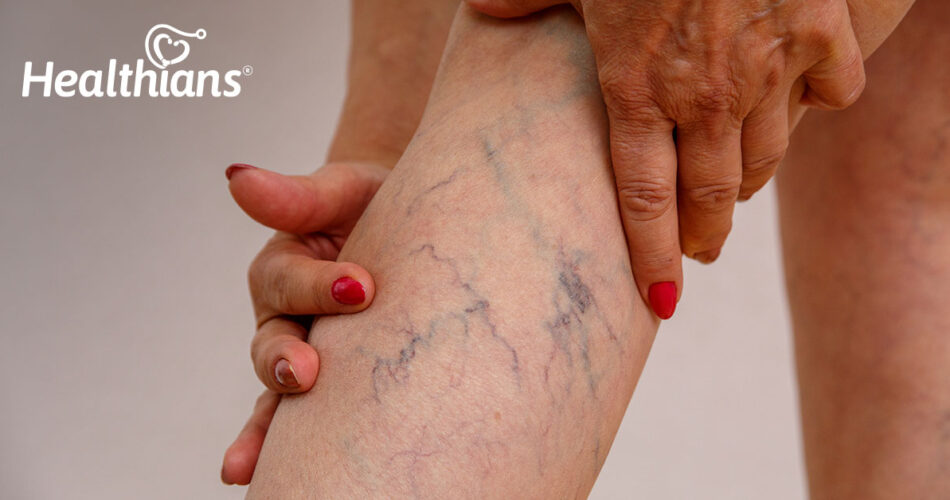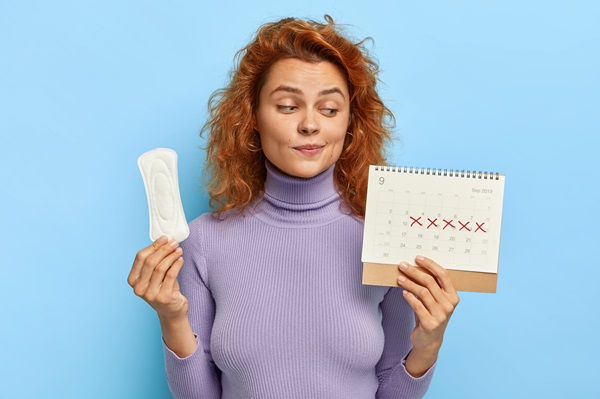Introduction
Are you embarrassed by the blue veins visible on your legs? Unable to wear your favourite piece of clothing because of the unsightly varicose veins? Is this issue interfering with your peace of mind? Then don’t worry; we’ve got some tips for you to get rid of those blue veins.
Varicose veins, also known as varicose or varicosities occur when your veins become swollen, dilated, and overfilled with blood. These veins are elevated, bluish-purple or red in appearance and are frequently painful.
The associated symptoms are:
Burning sensation in the leg
Inflamed ankles and feet
Heavy or achy feeling in the legs
Dry or itchy skin on or around the varicose veins
Muscle cramps
The illness is very common, especially in women. It affects approximately 25% of adults and typically occur on the lower legs.
For whatever reason, you may not be ready to undertake a non-invasive procedure to remove your varicose veins. We understand.
Also read: Potassium Deficiency; Causes, Symptoms, & Treatment
So today we’ll focus on things you may do at home to reduce the symptoms of varicose veins and slow their progression.
Top 10 natural ways to relieve and reduce varicose veins
Exercise, exercise, exercise
Regular exercise promotes better blood circulation in the legs. Better blood circulation and the pumping of the calf muscle (which has a heart-like effect in the legs) help to drive the blood trapped in the veins back up towards the heart.
Exercise can also help lower your blood pressure, which is a common cause of varicose veins. You don’t have to engage in a high-impact fitness regimen to see improvements.
Low-impact workouts such as swimming, walking, cycling, and yoga are all good strategies to get the calf muscles pumping and the blood flowing.
Say ‘no’ to sodium-rich foods
Sodium-rich foods cause the body to retain water. In order to minimize water retention, cut down on salty, sodium-rich food.
Inculcate potassium-rich foods
Potassium is an essential nutrient that minimizes water retention by causing cells to release water in the form of urine.
To enhance potassium in the body, add these healthy foods to the diet namely; lentils and white beans, potatoes, leafy vegetables, almonds, pistachios, and certain fishes like salmon and tuna.
Avoid straining while passing motion
Straining while passing motion may worsen or aggravate the damaged valves. Always eat foods rich in fibre keeping your bowel flowing smoothly. These foods include wheat, seeds, nuts, oats, flaxseed, legumes, and whole grains.
Eat more flavonoids
Flavonoids are a group of natural substances that increase blood circulation making it less likely to pool in the veins. Flavonoids may also help shrink varicose veins by lowering blood pressure in the arteries and relaxing blood vessels.
One should include foods that contain flavonoids and these are onion, garlic, spinach, broccoli, cocoa, bell pepper, citrus fruits, apple, grapes, cherries, and blueberries.
Choose non-restrictive clothing
We understand that this may be difficult for some of you, but tight-fitting clothing can impede blood flow and make it more difficult for damaged valves to pump blood back to the heart.
Wearing loose-fitting clothing may help with circulation. Wearing flats instead of heels may also assist with varicose veins in the legs since it is simpler for your body to circulate blood when your feet are flat on the ground.
Also read: Iron-rich Drinks To Increase Blood Haemoglobin
Keep the legs elevated
Elevating the legs to the same level as or above the heart will help enhance circulation. It relieves strain in your legs and allows gravity to help transport blood easily back to your heart.
If you’re going to be sitting for a long time, keep your legs as elevated as possible.
Massage regularly
Massage not only gets the blood flowing, but it also helps you relax. Avoid pressing directly onto the sensitive tissues on or around your varicose veins if you opt to give a gentle at-home massage.
Instead, use calm, soft movements around the veins to bring the blood back to your heart. Massage oils or moisturisers can be applied to achieve the best results.
There are also essential oils that are recommended specifically to treat varicose veins or that have been blended into massage oils to stimulate circulation.
Keep moving
Long periods of sitting or standing worsen varicose veins. If you must sit for lengthy periods of time at work, take a few minutes every hour to get up and walk, or, if that is not possible, change positions periodically to keep the blood flowing freely.
If you must stand for extended amounts of time, move your body as much as possible by taking short walks or performing squats.
Compression stockings
Last but not the least, you can try using compression stockings to put more pressure on your legs than conventional socks or hoses. The pressure prevents blood from collecting and aids the muscles and veins in returning blood to the heart. Compression stockings are available in most pharmacies and even online.
A 2018 study discovered that using knee-high compression stockings with a pressure of 18 to 21 mmHg for one week reduced the heaviness, soreness, and hurting associated with varicose veins.
When you have tried everything, but nothing works!
If varicosities cause intense pain and you are losing sleep because of it, you may also look for non-invasive medical treatments including endovenous thermal ablation or laser surgery, sclerotherapy, and endoscopic vein surgery.
Endovenous thermal ablation/laser surgery: In this procedure, a laser is used to apply heat on the varicose veins to reduce or fade away the appearance of those blue veins.
Sclerotherapy: In this procedure, a solution is injected directly into the veins causing those blue veins to scar and thereby helping blood flow happen in the nearby healthy veins
Endoscopic vein surgery: In this procedure, an endoscope is inserted to get a view of the interior part. Small incisions are made to remove the varicose veins.
Final thoughts
Varicose veins can be uncomfortable and make a person feel self-conscious. It is feasible to treat these veins at home, and dietary and lifestyle adjustments may alleviate symptoms.
People with severe varicosities may choose to seek medical treatment to help lessen their appearance and symptoms of the condition.
However, every individual is different. Discussing your particular problem with a doctor helps you make the best decision about the right treatment to minimise the progression of varicose veins.
Moreover, one should also opt for a full body health checkup to get detailed information about their body vitals so that an individual can get the right medical treatment on time.
Frequently asked questions (FAQs)
Ans. Triterpenic fraction of Centella asiatica (TTFCA) is a substance found in Gotu kola. TTFCA is very beneficial for varicose veins since it encourages the development of collagen and elastin. These connective tissues are required to strengthen the inside lining and walls of your veins.
Ans. Foods that are rich in potassium are beneficial for healing varicose veins. Avoid consuming sodium-rich foods as it causes the body to retain more sodium resulting in increasing the amount of fluid in the body.
Ans. Exercise, compression stockings, diet and nutrition, massaging, and keeping the body moving are some natural ways that can help cure varicose veins.
Ans. Chamomile, Cypress, Eucalyptus, Helichrysum, Lavender, Neroli, and Peppermint are some essential oils that help reduce varicose veins.
Ans. Low levels of vitamin K2 result in calcification of elastin, the cause of piles, double chin, and varicose veins.




